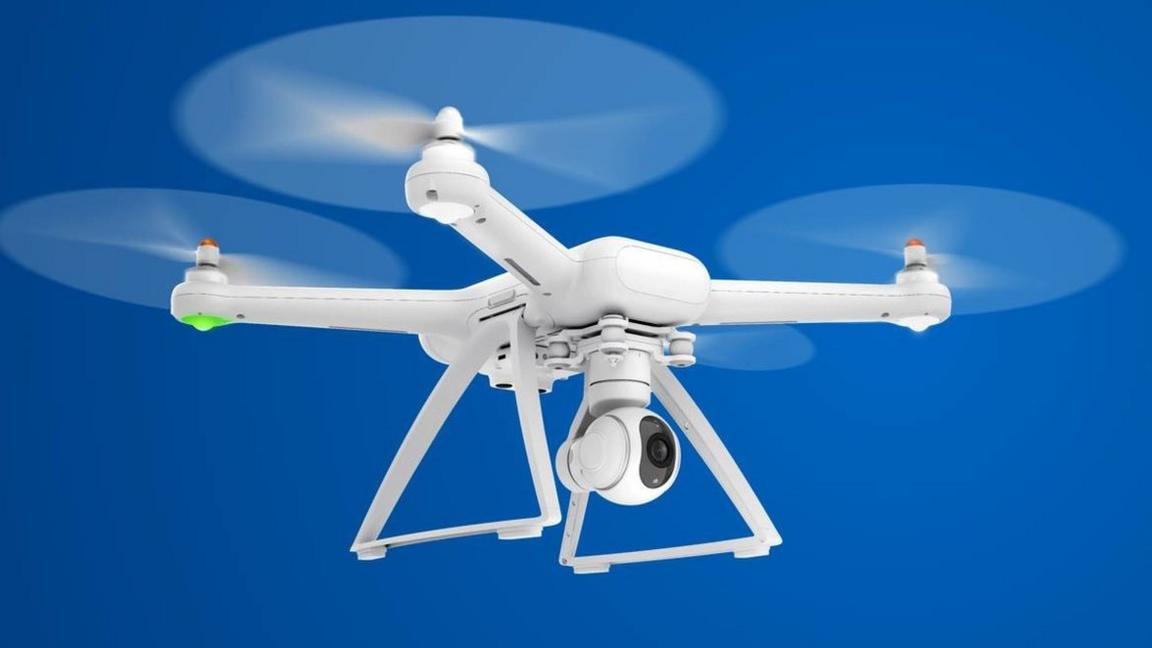GoPro launches Karma drone and voice-controlled Hero5
- Published
Watch: GoPro shows off its fold-up Karma drone
Camera-maker GoPro has unveiled a foldable drone that fits in a backpack.
The Karma aircraft also features a detachable stabiliser that can be used to make handheld shots more steady.
In addition, the firm unveiled a new action camera that can be controlled with voice commands as well as a pay-to-use video sharing service.
GoPro hopes the launches will turn around its fortunes. The firm posted losses for each of its last three quarters totalling $233.7m (£179m).
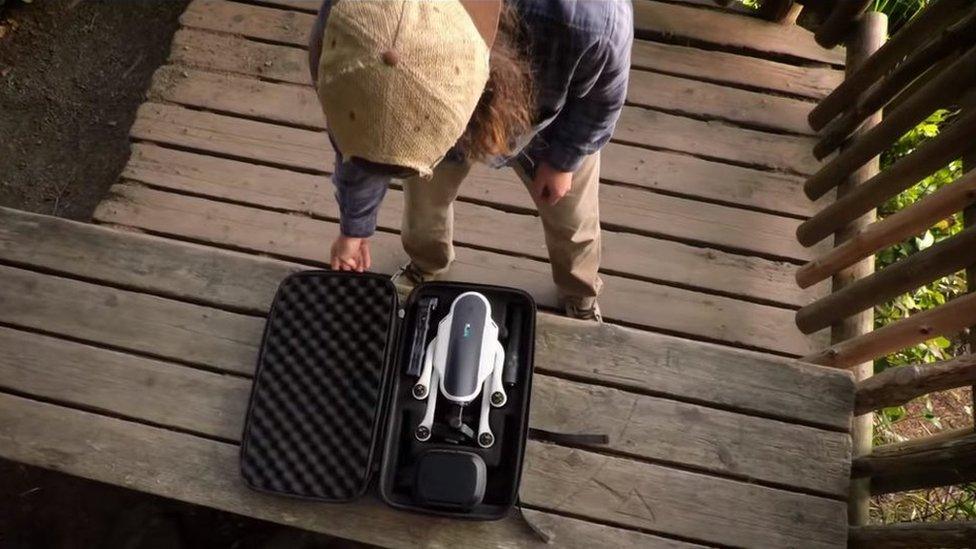
The drone is designed to be carried outdoors in a backpack
The company's shares were trading at more than 80% below their July 2014 high ahead of its launch event - which was held at Squaw Valley, California.
Foldable drone
GoPro first announced that it planned to make its own drone in May 2015 and had planned for it to go on sale in the first half of this year.
The move presents an opportunity for it to profit from a fast-growing market.
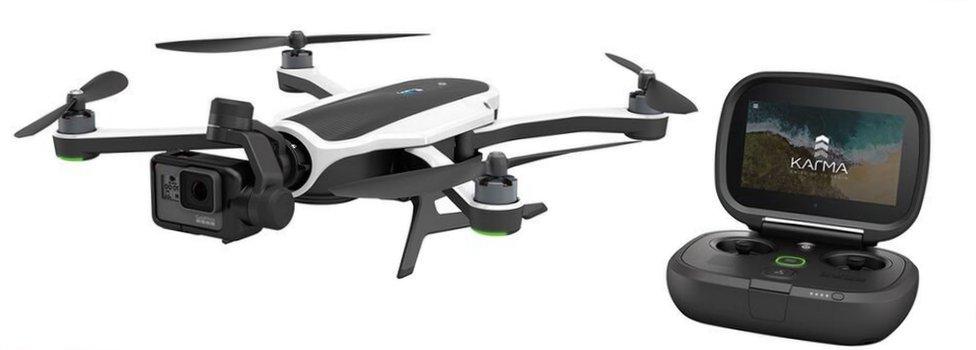
GoPro says the Karma's use of a front-facing camera means its rotor blades will seldom appear in shot
But it also helps the firm address the fact that DJI - the bestselling drone brand - has ditched support for GoPro's cameras in favour of its own, while 3D Robotics - another popular manufacturer - is now promoting the use of a rival camera made by Sony.
The Karma is not the first commercial foldable drone, but the feature is still relatively unusual.
Watch: Dave Lee gets hands on with GoPro's Karma quadcopter
GoPro says the move allows its aircraft to be carried about in a relatively small backpack that is "so comfortable... users will forget they've got it on".
The Karma's other distinctive detail is its removable three-axis stabiliser.
It can be fitted to a bundled grip and then held in the hand or attached to a helmet to film Steadicam-like shots.
Normally, filmmakers would be required to buy a separate device known as a gimbal, to achieve this.
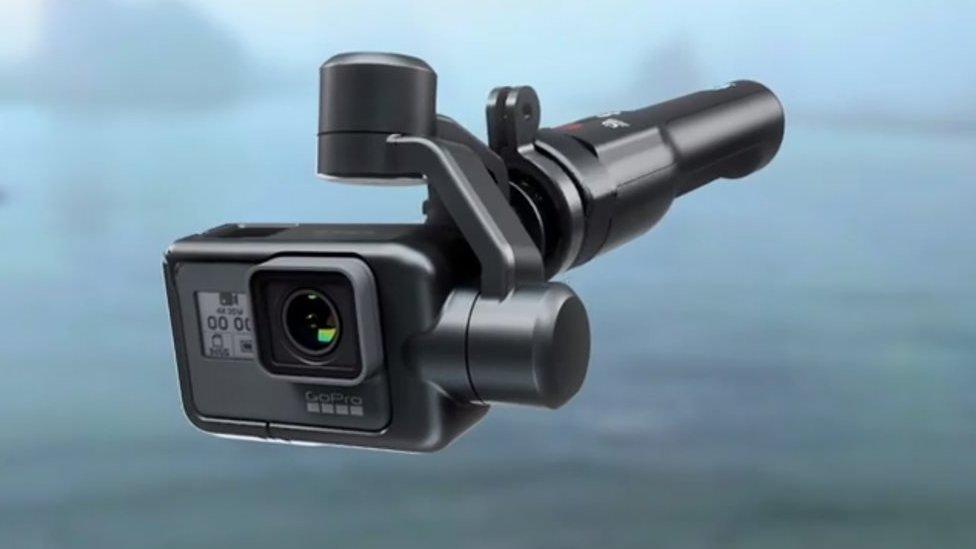
The drone's stabiliser can also be attached to a handheld grip
The drone will cost $799 (£612) and will be released on 23 October.
When bundled with the new Hero5 Black camera, it will cost $1099.
That is $100 less than DJI's Phantom 4 - which includes collision-avoidance sensors, which the Karma lacks - but $100 more than the Chinese company's last-generation Phantom 3 Professional.
The research firm IHS Markit predicts sales of consumer drones will rise from three million units this year to 6.7 million units in 2020.

The Phantom 4 is bulkier but includes collision-avoidance tech
"The target market for consumer drones and action cams is very similar, so it makes sense for GoPro to do this," commented its senior director of consumer electronics, Tom Morrod.
"And maybe it can carry it off because of its brand.
"But what differentiates one drone from another is its flight control and navigation systems, which are typically developed in-house by the different companies.
"That technology is very different to what GoPro's done before and can be complex to develop.
"So, GoPro must convince consumers of its abilities or will not find this an easy sell."
Upgraded Hero

The GoPro Hero5 Black camera will accept voice commands in seven languages at launch
The announcement of the Hero5 Black camera comes two years after that of the Hero4 Black - the longest GoPro has taken to refresh its top-end model to date.
The new $399 (£306) device features a 2in (5cm) touchscreen and can also be controlled by speaking to it, which might be useful in situations where the owner is wearing gloves or does not have a free hand.
"It opens up a whole new world of possibilities," said the firm's chief executive Nick Woodman at the launch.
"You just think it, say it, do it."
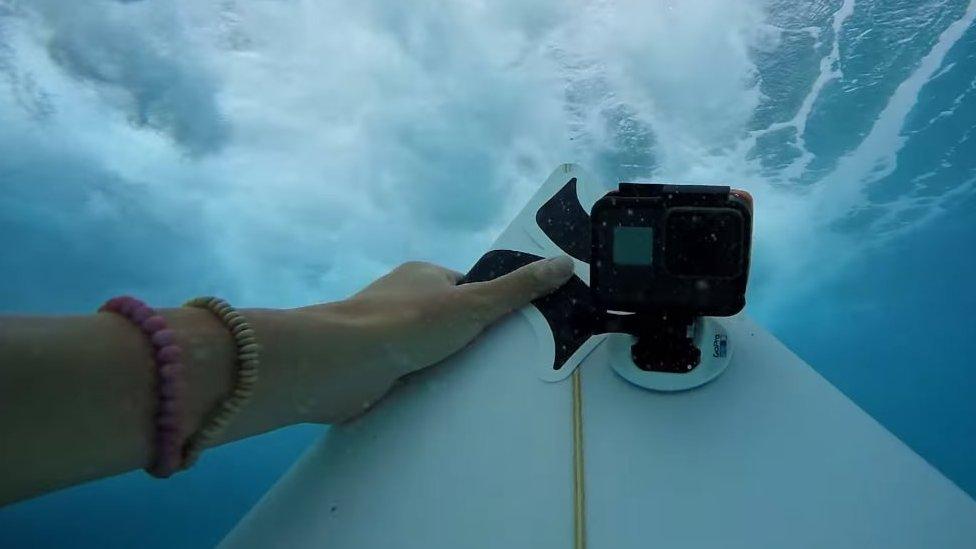
The Hero5 Black can be used underwater without a protective case
The firm suggested that the facility would also help users avoid missing critical moments.
As an example, it said an owner could say "take a photo" to snap a picture while they continued to simultaneously film video with the device.
Its 4K video and 12 megapixel photo capabilities are the same as the last generation.
But the new camera gains:
Waterproof protection without a case, up to depths of 10m (33ft)
Stereo sound recording via three microphones
Automatic electronic stabilisation of its footage
GPS location data
In addition, the camera can be set to automatically upload video and pictures to the firm's new video sharing service, GoPro Plus, if its owner takes out a $4.99-a-month subscription.
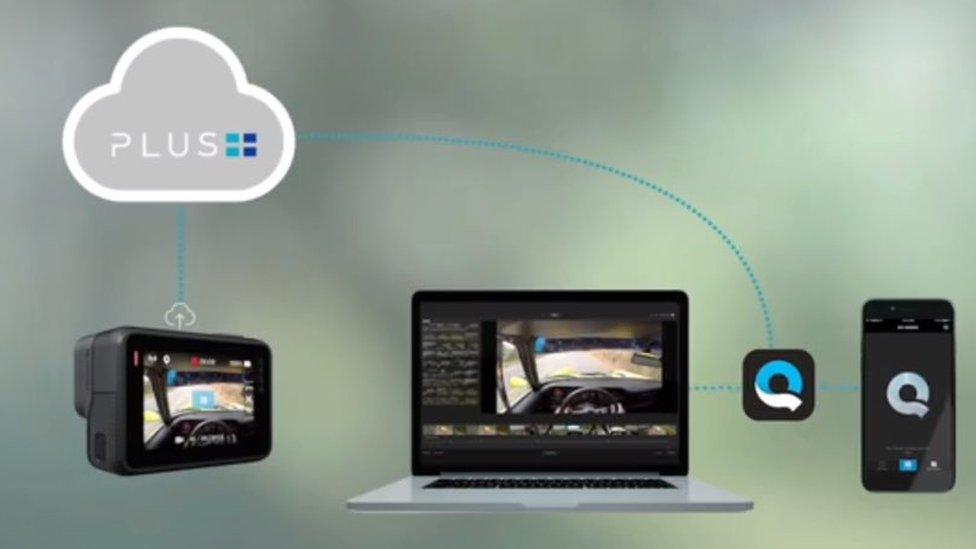
GoPro Plus offers the firm a chance to continue earning money after selling its hardware
The add-on also includes access to a library of music the owner can use for their edits as well as a discount on further accessory purchases.
The new camera - and a smaller HERO5 Session, which takes 4K video but only 10 megapixel photos - will be released on 2 October.

Analysis: Dave Lee, North America technology reporter
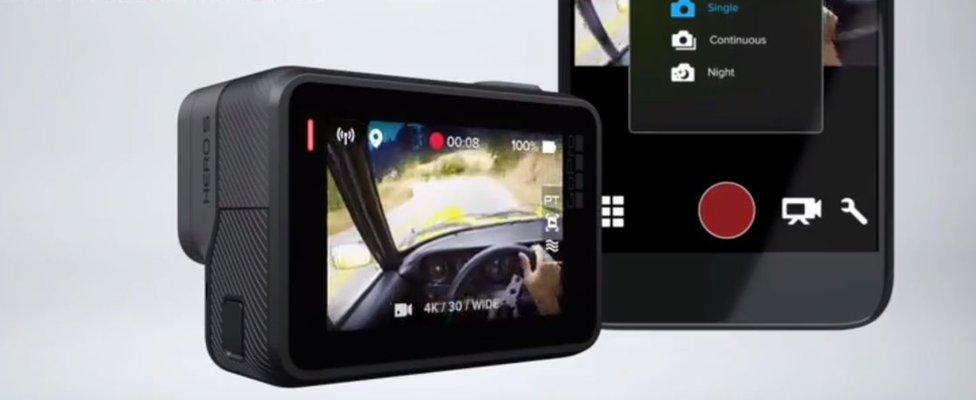
Three hundred. That's how many people GoPro have flown and driven in for this event. 100 of its own staff, 100 athletes and 100 reporters (for the record, the BBC has paid its way).
We're at around 6,000ft (1.8km) above sea level, in a jaw-dropping ski resort that hosted 1960's Winter Olympics.
GoPro is still the most recognisable brand in action cameras, so much so that "a GoPro" has become shorthand for any brand of small camera.
But the issue isn't whether GoPro is performing well in the market. They are. Problem is, the market isn't as big as they, and their shareholders, had perhaps hoped.
Today's launch of a drone and camera is designed to inject a bit of energy back into the firm.
Its new easy editing and publishing tool cement its ambition to not only dominate hardware but also the means of consumption for extreme footage.
Follow Dave Lee on Twitter @DaveLeeBBC

IHS predicts sales of action cams will grow from 11 million this year to 14.5 million in 2020, but GoPro might not necessarily benefit.
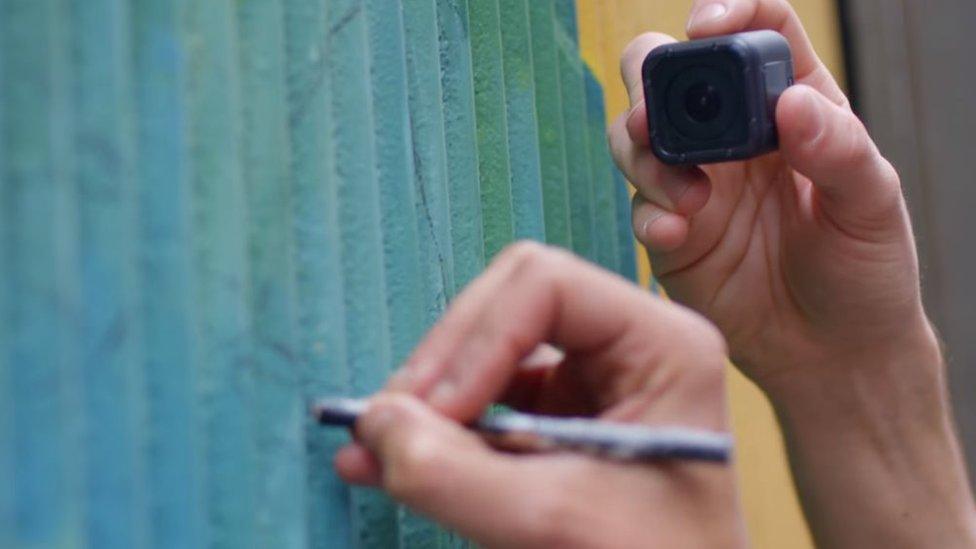
GoPro also has a new Session camera, which lacks a screen but can also be controlled by voice
"There's increased competition in the market," said Mr Morrod.
"At the high-end, Sony and Panasonic have released kit targeted at broadcasters and other professionals.
"At the low-end, the market has been commoditised by budget small cameras from the likes of Xiaomi and other less well known brands.
"Added to that, increasing numbers of smartphones - like the Samsung Galaxys and Sony Xperias - are now waterproof and dustproof and all that limits the market."
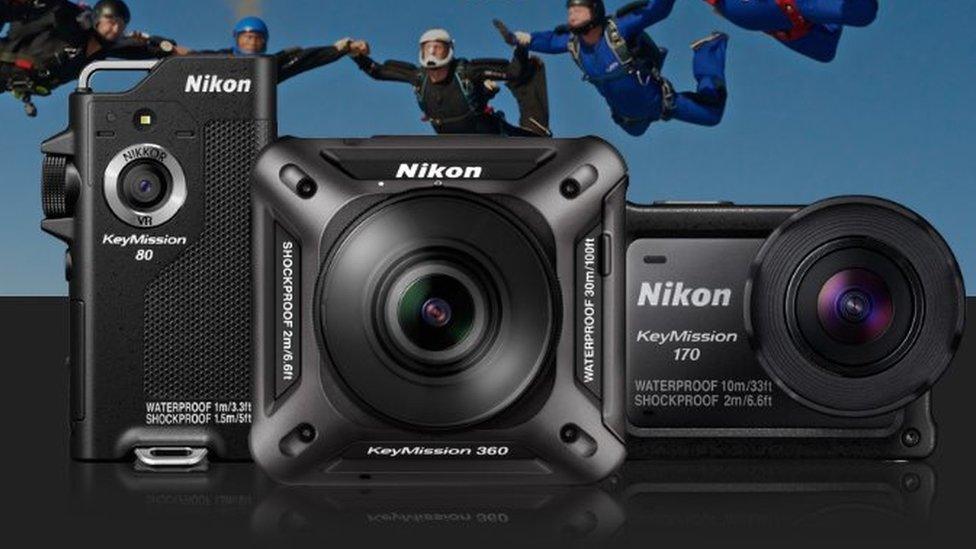
Nikon is the latest manufacturer to announce rival products to GoPro's cameras
To underline the point, Nikon - one of Japan's leading camera brands - announced a new range, external of "freeze-proof" KeyMission action cams on Monday, shortly before GoPro's event.
- Published20 September 2016
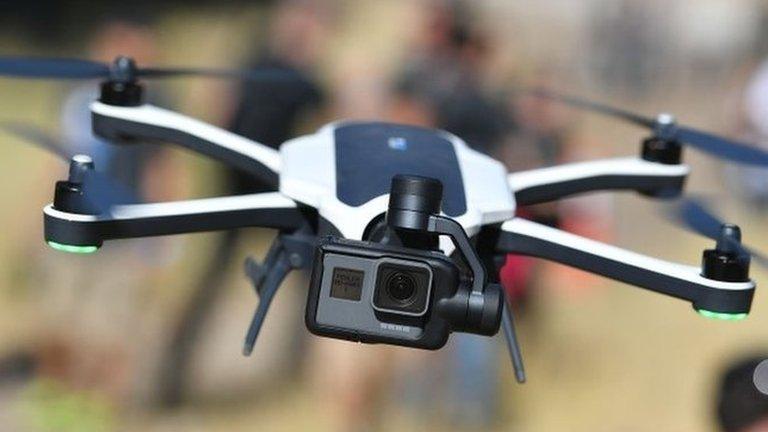
- Published19 September 2016
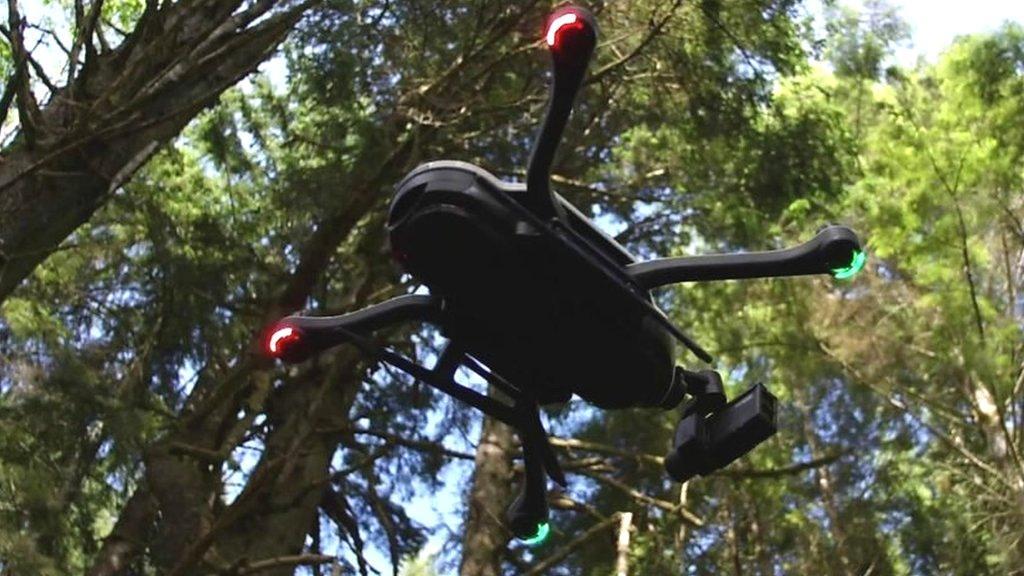
- Published1 September 2016
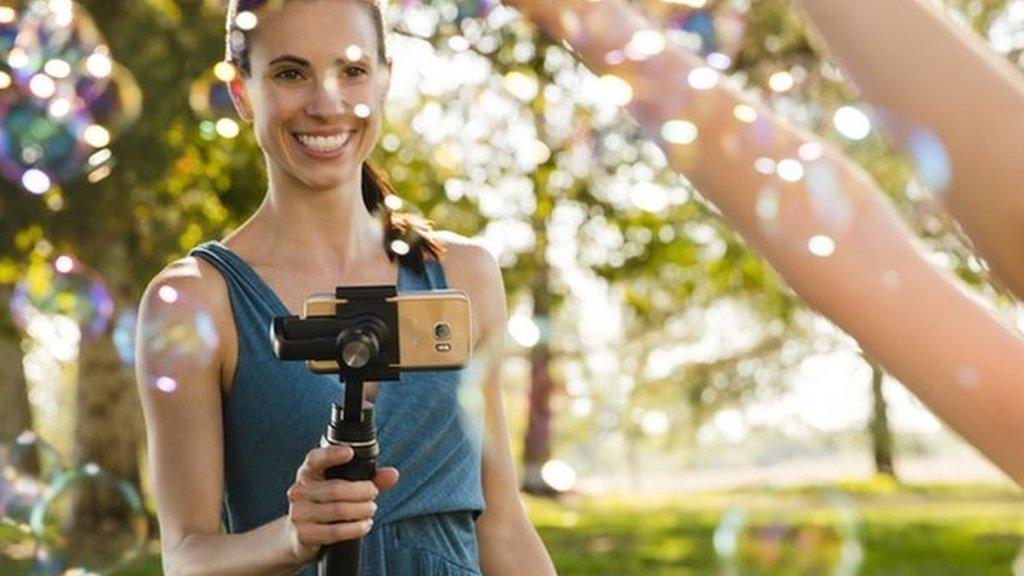
- Published5 July 2016
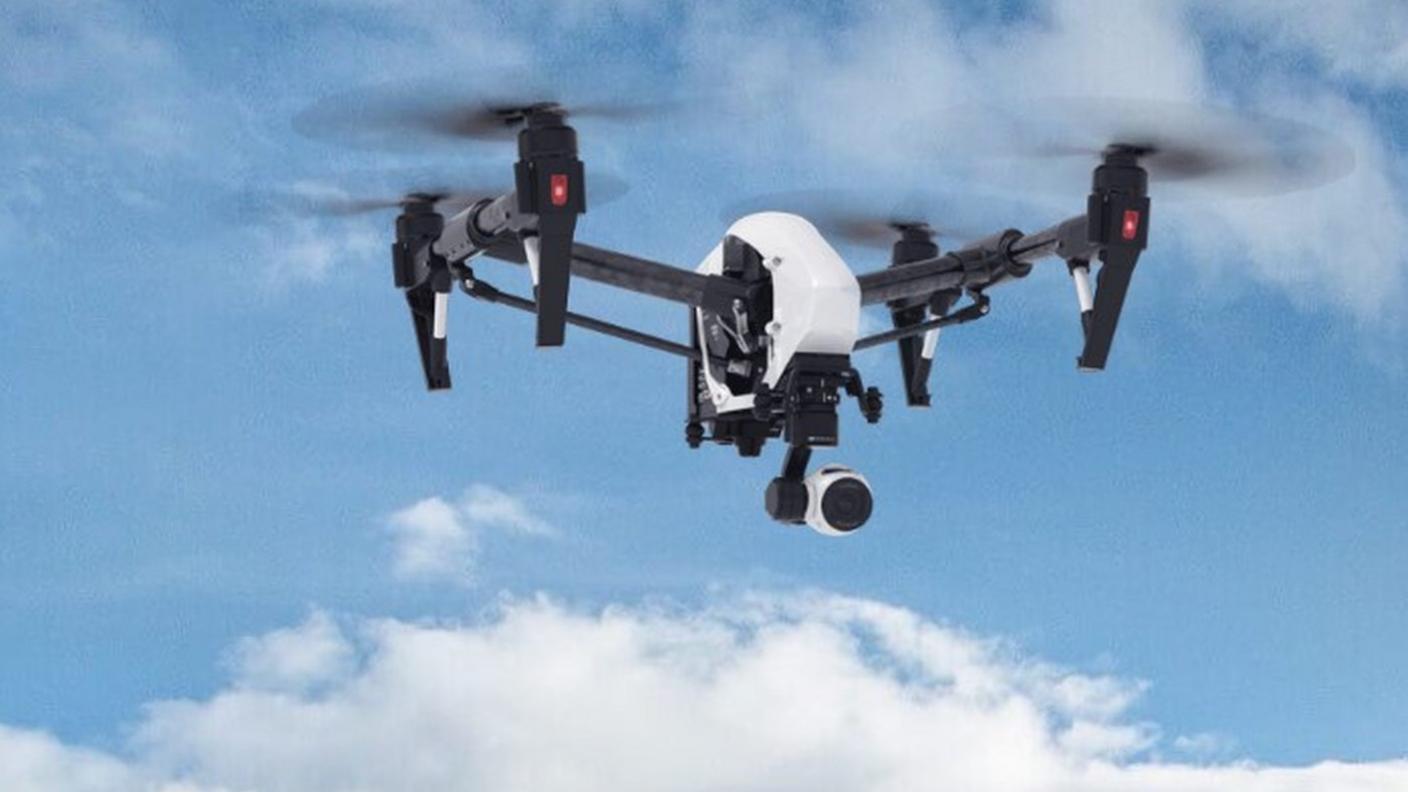
- Published25 May 2016
